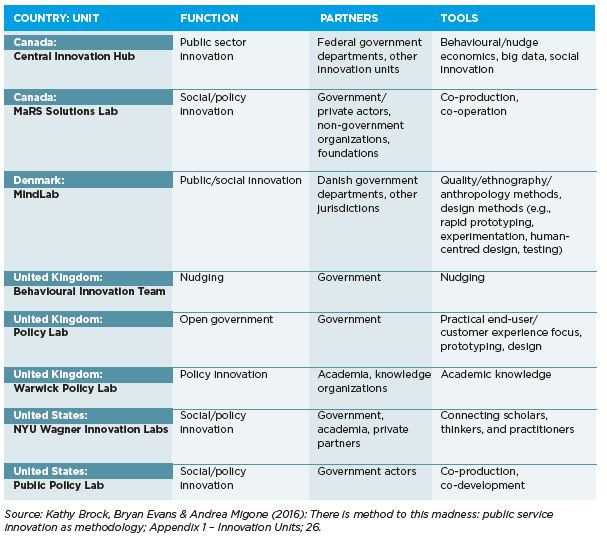In the new organization, power flows from expertise, not position. ⎯ THOMAS A. STEWART
Governments must adapt to increasingly complex globalization, technological, demographic, and fiscal forces. The effects motivate new, often creative, approaches to public policy and administration. Canadian governments take bold steps everyday to institutionalize the capacity to innovate.
Systemic aversion to risk limits the capacity to promote and adopt innovation. It affects the resilience of governments to deliver responsive, citizen-centred programs and services. Shortfalls in knowledge and expertise also impair the capacity to create, implement, evaluate, and recognize innovation.
Knowledge-sharing organizations systematically learn from mistakes, improve performance, and scale up successes. They nurture an enabling environment and develop the technical skills to disseminate knowledge. They inculcate practitioners with conceptual frameworks, analytical tools, real-world examples, and creative insights.
The challenges to developing organizational capacity are threefold:
- Process – cycling whole-of-government discovery that prototypes and tests great ideas in an innovation-friendly environment;
- Example – showcasing sustainable innovations that inspire diffusion of lessons learned across the public service; and
- Structure – centralizing hubs, labs, and nudge units that protect innovation but sometimes entrench a cultural divide in diffusion.
Hubs, labs, and nudge units
Restructuring by the turn of the millennium witnessed the demise of bureaucratic departments in favour of a diversified typology of organizational forms and functions. Many governments mapped and experimented with innovative pathways by agencifying the gamut of hubs, labs, and nudge units that concentrate and separate resources from the mainstream public service. The consequences were increased dependence on innovation units for professional expertise, divergent expectations between departments and units, and constrained motivation for diffusion.
These units also represent collaborative places in liberated organizational space where stakeholders can workshop complex problems and design new solutions. They reduce hierarchy and embrace appropriate levels of risk taking and accountability in organizations. They present opportunities to develop prototypes that participants can design and test before making large investments. Their proliferation is commensurate with overcoming horizontality, risk aversion, and blame fixing.
Brock, Evans & Migone (2016) uncovered more than 100 public sector innovation labs worldwide, most established after 2011. They vary greatly in locus of control, scope of services, and means of operating. Eight leading examples are featured in the accompanying table.

Lessons for managers
Innovative institutions continuously assess their capacity to handle tasks and access alternative sources of expertise. Many need to strengthen policy capacity, as well as to develop new skills in managing people, contracts, technology, finances, and risk. They use a combination of in-house experts and external consultants. Regardless of resource mix, transfer of knowledge must happen throughout the process to support capacity building, customized solutions, and self-managed projects.
Hubs, labs, and nudge units offer cutting-edge lessons. Since government transfers the majority of spending to third parties, it is worth getting to know the levers for engaging entities in the broader public sector. Managers should beg, borrow, and steal to forge strategic relationships but should also be wary of prolonging connections beyond their useful life.
Public managers can expand expertise via horizontal designs and modern human resource strategies by:
- Promoting nimble, agile, and adaptable skill sets in response to constant change;
- Investing in capacities that improve public governance, policy, and reform;
- Targeting job-related expertise for impactful development;
- Pinpointing gaps in workforce capabilities using data and evidence;
- Attracting competencies that enhance the value proposition and market segmentation;
- Nurturing a learning culture for continuous public service renewal; and
- Engaging employee expertise in opportunities that drive change.

